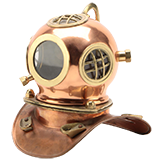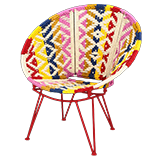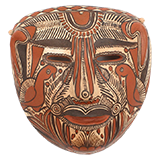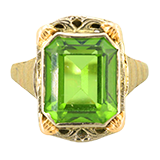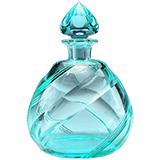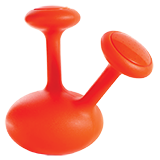Jules Olitski: "Eighth Daughter", 1973
Item Details
Jules Olitski (American, 1922-2007)
Eighth Daughter
January, 1973
water based acrylic on stretched canvas
inscribed, dated and titled on canvas verso
dedicated on central stretcher bar by artist; to Ken, from Jules, 4 April 1973
pair of artist’s inventory labels on central stretcher bar
Provenance
Ex Collection of critic and curator Kenworth Moffett (1934-2016) and Lucy Baker (b. 1955)
Descended in the family to the current owner
This work will be included in the forthcoming catalogue raisonné of the artist’s work
An original water-based acrylic painting on canvas titled Eighth Daughter from the Daughter Series by well-listed Color Field artist Jules Olitski (American; 1922 – 2007), created in 1973. This pastel-hued painting is rendered with a rough textural surface. An gradient effect transitioning from pink to green runs diagonally across the composition. The piece is signed, titled, and dated to the verso on the canvas. A dedication to Kenworth Moffett (1943-2016) is present to the central stretcher bar. The inscription states this piece was gifted to Moffett from Olitski on April 4, 1973. A red inventory label from the artist is also present to the verso on the central stretcher bar, indicating this example was the third work produced in that year. Housed in the artist’s frame and stretcher.
We know from the records of the artist’s daughter, Lauren Poster, as well as the inventory labels on verso that the Daughter Series was executed by Olitski during the Winter of 1972 and early 1973. Olitski would color code his labels to signify which year and season the work was completed. Information provided by the Jules Olitski Warehouse, LLC, and daughter of the artist, states the red label on this work indicates the piece was created in the winter of 1973, presumably in January. This example was gifted to Kenworth Moffett a few months after its completion and descended in the family until the present day.
Jules Olitski was born in Snovsk, Russia (now Shchors, Ukraine). In 1922 his father was executed by the Soviet government for being a commissar. The following year his mother and grandmother moved to the United States, settling in Brooklyn. From a young age, Olitski showed talent in artistic pursuits and was enrolled in Saturday morning art classes in New York. Olitski received a B.A. and M.A. in Art Education from New York University. He also received training from the Pratt Institute, National Academy of Design under Sidney Dickinson, and the Beaux Arts Institute in New York. Olitski is known for his technique in which he uses spray guns and squeegees to apply paint in a multilayered coating. ‘My pictures are only colors sprayed in the air and suspended there.’ was how Olitski described his work.
Like many student artists, Olitski was originally trained in portraiture. He was first exposed to the modern inclinations in painting in Paris during the late 1940s on the G.I. Bill, and studied at the Ossip Zadkine School and the Academia de la Grande Chaumiere. While there he saw European modern masters and began a period of intense self-analysis which involved painting blindfolded. In doing so, Olitski removed customary habits in his previous work. He returned to New York in 1951 and began employing heavy impastos and blended colors in his paintings. He had a notable one-person show in 1958 in the Zodiac Room at the Alexander Iolas Gallery in New York. There he met renowned Modern art critic Clement Greenberg (1909-1994) who later exhibited Olitski’s paintings at French & Company the following year. Greenberg was a pivotal figure during this period of time and would influence the career of Olitski with his critical prowess.
By the 1960s Olitski began to navigate away from heavily painted surfaces and started to investigate the staining techniques used by Modern artists Helen Frankenthaler (1928-2011), Kenneth Noland (1924-2010), and Morris Louis (1912-1962). However, it was in 1965 when Olitski laid down a piece of fabric and began spraying paint from spray guns. He switched from oil paints to polymer and gel based acrylics. The example offered here is derived from this method and became regarded as one of the artist’s most mature and innovative techniques. He was chosen as one of four American artists to represent the United States at the 1966 Venice Biennale. During 1969 was invited to exhibit large, aluminum, spray-painted sculptures at the Metropolitan Museum of Art becoming the first living American artist to be given a one-person exhibition there.
Aside from painting, Olitski taught at several universities and workshops along the east coast. His relationship with important modernists Anthony Caro (1924-2013) and Kenneth Noland developed in the 1960s when Noland moved to a farm in South Shaftsbury, Vermont nearby Bennington College where both Olitski and Caro taught. The work of the three artists maintained associative ties both during their lifetimes and posthumously. They were the stars of Hartford Art School’s three-person exhibition at the Joseloff Gallery in 1994, and their work continues to be exhibited together and linked today. Olitski also taught during the summer at Emma Lake Workshops in Saskatchewan. While there, he became better acquainted with Clement Greenberg, Kenneth Noland, Dorothy Knowles (1929-current), and presumably Friedel Dzubas (1915-1994) and Kenworth Moffett (1934-2016). Many of the works in this collection are derived from this period of time at Emma Lake.
Olitski had over 200 one-person exhibitions in his lifetime. Galleries and museums that held these exhibitions included the Toninelli Arte Moderne in Milan; Metropolitan Museum of Art, New York; Galerie Wentzel, Hamburg; and La Musee de Valence, Valence, France to name a few. His work can be found in numerous institutions such as the San Francisco Museum of Modern Art, California; the Metropolitan Museum of Art in New York; and the Solomon R. Guggenheim Museum, New York, among others.
Condition
- scuffs are present to the frame.
Dimensions
- measures in the frame; canvas size: 19" W x 42.50" H.
Item #
17DET014-012


















